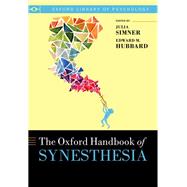Synesthesia is a fascinating phenomenon which has captured the imagination of scientists and artists alike. This inherited condition gives rise to a kind of 'merging of the senses', and so for those who experience it, everyday activities like reading or listening to music trigger extraordinary impressions of colours, tastes, smells, shapes and other sensations. Synesthesia research also informs us about normal sensation because all people experience cross-sensory mappings to an implicit degree. Synesthesia has a considerably broad appeal, and in recent decades the field has experienced a resurgence of interest. These advances have painted a detailed story about the development, genetics, psychology, history, aesthetics and neuroscience of synesthesia, and provide a contemporary source of study for a new generation of scholars.
The Oxford Handbook of Synesthesia brings together this broad body of knowledge into one definitive state-of-the-art handbook. It includes a large number of concisely written chapters, under broader headings, which tackle questions about the origins of synesthesia, its neurological basis, its links with language and numbers, attention and perception, and with 'normal' sensory and linguistic processing. It asks questions about synesthesia's role in language evolution, and presents both contemporary and historical overviews of the field. It shows synaesthesia's costs and benefits (e.g., in creativity, memory, imagery) and describes how synaesthesia can provide inspiration for artists and designers. The book ends with a series of perspectives on synesthesia, including a first-hand account, and philosophical viewpoints which show how synaesthesia poses unique questions about sensation, consciousness and the nature of reality.








